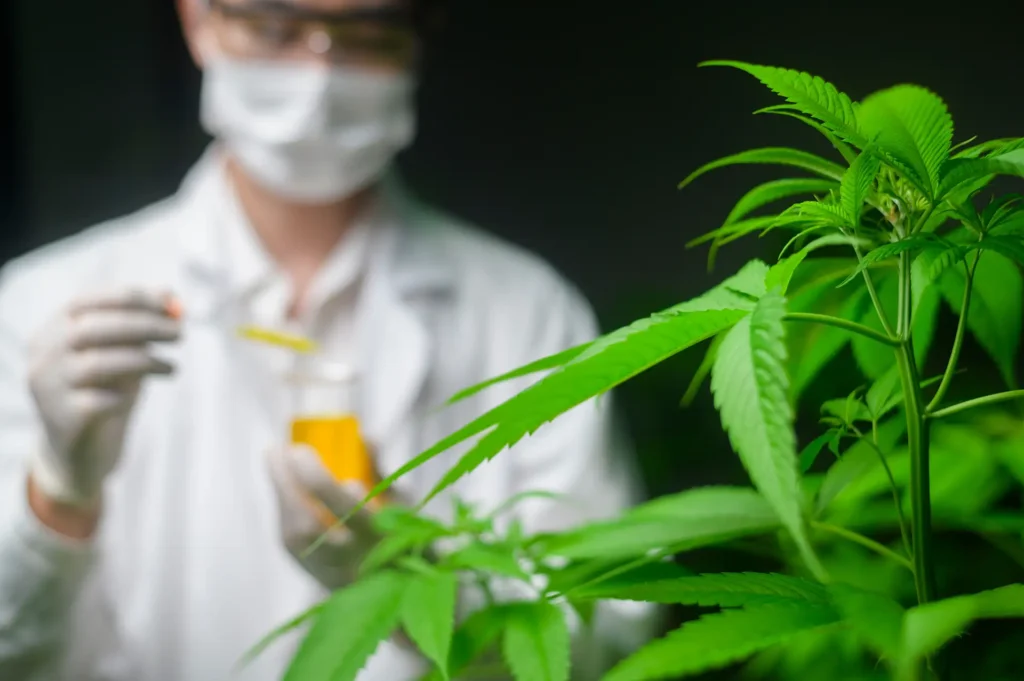Chronic pain – defined as pain that persists for more than three months – represents a significant challenge to both patients and society as a whole. Patients with chronic pain tend to experience reductions in daily activities and lower quality of life. This can include effects on sleep, mood, anxiety, ability to work, and relationships. Yet, there are a limited number of pain medications that are deemed appropriate for long-term use for chronic pain.
There has been growing interest in the potential use of medical cannabis as a result. However, despite promising preclinical data, there remains a lack of high-quality evidence to conclusively support the routine use of medical cannabis for chronic pain management. Consequently, only individuals who have tried and failed unlicensed medications for chronic pain are potentially eligible for medical cannabis in the UK.
Previous systematic reviews and meta-analyses have yielded mixed results concerning the safety and efficacy of medical cannabis for chronic pain. Furthermore, the complexity of the cannabis plant – from its many active constituents to its various routes of administration – can make it difficult to conduct high-quality randomised controlled trials (RCTs) with medical cannabis. In the absence of clinically useful information from RCTs, observational studies are helpful to provide further insight into the potential of CBMPs.
A recent observational cohort study aimed to “prospectively and systematically follow patients with chronic pain treated with oil extracts of medical cannabis.”
Design and Methods of the Study
Researchers aimed to examine individual THC and CBD dosing and titration over a six-month period to gain insights into real-life dosages, outcomes, and adverse events in individuals receiving oil extracts containing cannabidiol (CBD) and tetrahydrocannabinol (THC), and to identify any associations between baseline measures and outcomes.
Participating patients were contacted by an investigator and asked to complete study questionnaires and provide information regarding medical cannabis dosing at baseline (before titration initiation) and at 1, 3, and 6 months after treatment initiation. Eligible patients were selected by collaborating physicians based on their own clinical judgment.
The questionnaires collected the following data: average weekly pain intensity and average daily pain intensity; CBD/THC oil dose (milligrams per day); opioid consumption (yes/no); 7 validated versions of the following questionnaires: short-form McGill Pain Questionnaire; Pain Disability Index; EQ-5D; Pittsburgh Sleep Quality Index; Beck Depression Inventory II; General Anxiety Disorder-7; and Pain Catastrophizing Scale. Patients reported adverse events at each follow-up.
Results of the Study
A total of 218 patients were eligible for the study; all were treated by a specialist for their pain diagnosis for at least one year and failed to obtain satisfactory pain relief, before starting medical cannabis. The most common reason for being prescribed medical cannabis was nociplastic pain (44%; n = 98), followed by nociceptive pain (25%; n = 55), neuropathic pain (21%; n = 48), headache (6%; n = 13), and visceral pain (4%; n =9).
What was the dose of the CBD/THC oils?
Mean THC daily dose gradually increased from 13.2 ± 15.3 mg/d at 1 month to 17.2 ± 18.2 mg per day at 3 months and to 20.8 ± 30.1 mg/d at 6 months. The mean CBD daily dose remained relatively stable at 1, 3, and 6 months between 20-25 mg per day.
Effect on Pain and Other Symptoms
The data revealed a change from baseline in all outcome measures, except for depression, at all three time points with the largest change at month 6. Furthermore, there was also a change in the amount of opioids prescribed to each patient during this study.
Adverse Events
A total of 99 participants reported adverse events at month 1, with fewer reporting incidents at month 3 and month 6 (78 and 42, respectively). Most adverse events were categorised as non-serious. Adverse events were most commonly neurological or related to the gut. Throughout the study period, 11 participants discontinued the study due to adverse events. Serious adverse events requiring inpatient hospitalisation were reported by 9 patients.
Conclusions
The findings of this structured, prospective cohort study demonstrated modest changes in pain and associated symptoms, as well as in functioning and quality of life. Furthermore, medical cannabis treatment was associated with changes in opioid use.
Hi While the primary outcomes of this study are promising, more research is needed to better understand the safety and efficacy of medical cannabis in the treatment of chronic pain.





